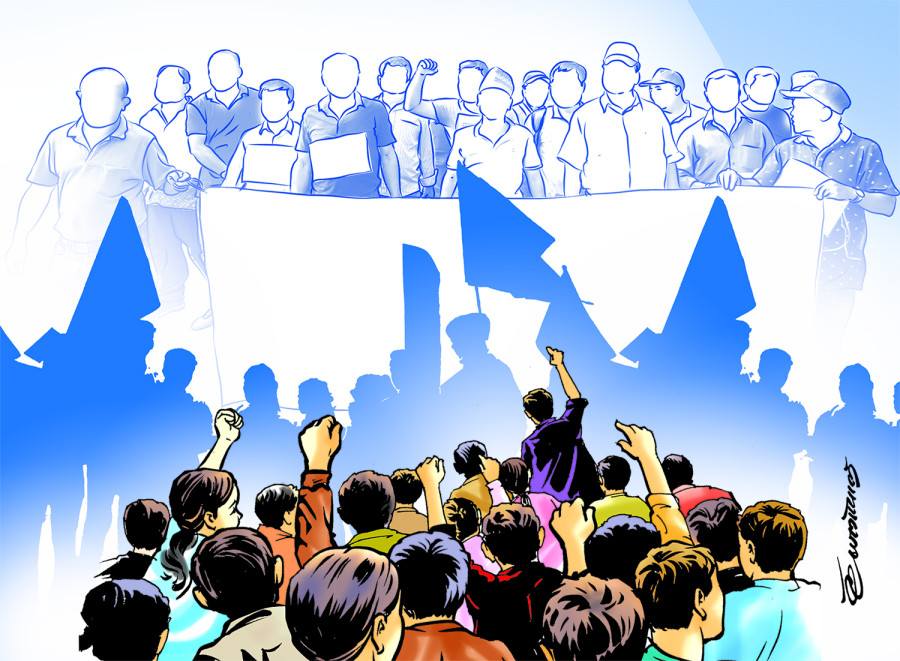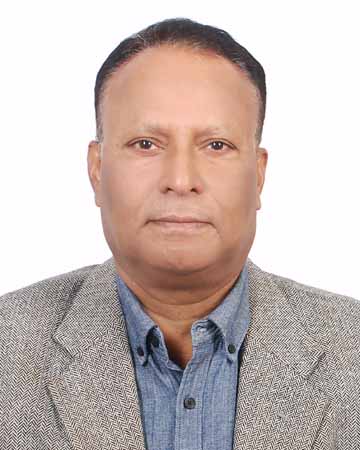Columns
Emerging conflicts in Nepal
If our leaders ignore vital reforms, the values of the republican constitution come under threat.
Vidyadhar Mallik
Every year on April 24, Nepal observes ‘Loktantra Diwas’. On this day in 2006, following the Jana Andolan (People’s Movement II), monarchy was abolished and democracy was revitalised. However, Nepal is currently seeing events that are contrary to the spirit of the movement. On March 28, some pro-monarch and pro-Hindu groups staged protests in Kathmandu. The ensuing violence left dozens injured, caused destruction and looting of property and led to the deaths of two people.
The federal capital frequently sees demonstrations, whether from the pro-monarch/pro-Hindu groups, teachers demanding the enactment of the School Education Act, medical students calling for higher scholarships or other groups seeking the government’s attention to fulfil their demands. Anti-monarchist groups like socialist alliances and Madheshi parties’ alliances have begun demonstrations against the pro-monarch rightists and the mainstream parties. The leaders seem more engaged in gaining power through undue appointments, running their offices to serve a narrow client base, or managing political factions within their parties rather than listening to people’s dissatisfaction and frustration.
Emerging conflicts
Public demonstrations of such scale do not happen spontaneously and aren’t a one-time display of the power of organizing groups. They need a lot of preparation and resources and require strong willingness. Many underlying currents and fault lines exist within these conflicts. One is the emergence of groups favoring monarchy. Another is politically unaffiliated (independents) silent but frustrated urban youths who are disillusioned with the government’s performance, especially with the older generation of political leadership. Youths want political power in the younger generation’s hands for effective service delivery, better employment opportunities and transparent and accountable governance. Although this group can’t be named as a definitive fault line of emerging conflict, they can turn to be highly volatile and can quickly mobilise and shift power.
Then, there are remnants of disadvantaged socio-economic and ethnic groups of society, like many Madheshis, Janjatis, Dalits, Muslims and marginalized groups who had not accepted the Constitution of 2015 entirely and are still disgruntled regarding its delivery to their causes of inclusivity and dignity. They may get ignited by any potential cause (perceived or otherwise) of threat to their existence as a political and social force. A permanent opposition within mainstream parties exists, be it individuals or groups—who loosely form a convenient platform of opportunists and jump to the bandwagon of the other side—to remain in or cling to corridors of power—are another source of conflict in Nepal.
More microcosms may influence the emerging conflicts in Nepal, like foreign interests and geopolitics of Nepal, amid current rightist waves from the Americas to South Asia. Strong interests from business houses and powerful vested interest groups, including within the Parliament, add fuel to the dissatisfaction of the general public.
Scenarios for consideration
Some potential scenarios can be construed from these fault lines of emerging conflicts. There can be two extreme scenarios. One, the former King Gyanendra returning as an absolute monarch, similar to when he dismissed the prime minister and cabinet and assumed direct power in February 2005. The other is the pro-republic and pro-constitution forces crushing pro-monarch and pro-Hindu forces and the extinction of extreme rightist/revisionist forces.
We can also draw two mild-case scenarios. One is the maintenance of the status quo, synonymous with a ‘slow poison scenario’. If this continues and the current leadership denies needful reforms, the notion of the federal democratic republic of Nepal and the current constitution may become questionable. The other is the ‘actionable reform case scenario’. It depends on the willingness of the stakeholders of the current political system to seriously undertake the agenda of actionable political reforms, which focuses on immediate governance and political accountability reforms, along with economic reforms with a right-based approach, especially for unemployed youths and underserved groups. This is the best case for Nepalis and aligns with the 2006 People’s Movement demands.
Towards actionable reforms
Not everything has gone wrong in Nepal. There is a lot of global data from reputed sources which states that Nepal’s performance in socio-economic sectors, including the SDGs, is better than the South Asian average, including India’s, in many cases. One can look at basic health and education data for this. Nepal will soon graduate from the least developed country (LDC) status to a developing country. The Human Development Index has improved from 0.461 in 2000 to 0.601 in 2022. Nepal’s performance is better than that of many of its neighbours in worldwide governance indicators like voice and accountability, rule of law and regulatory quality, according to the World Bank. The Gender Development Index of 0.885 is higher than that of India. However, Nepal’s performance in terms of government effectiveness has always been poor.
The government must undertake citizen-centric approaches to all governance matters. Exercising leadership selection based on merit and direct selection by people through primaries is crucial to achieving that. Election financing needs to be public-sourced and transparent. Further, it is also essential for civil servants to enhance their public service. The government should invest in the vulnerable and marginalised, especially in quality education, healthcare, nutrition and social security. Increasing the consumption of poor and middle-income groups is necessary to raise the aggregate demand and attract investments. It should also prioritise projects which benefit the masses. Government should provide a level playing field to all businesses and entrepreneurs without meddling in their resource allocation decisions.
What Nepal lacks is the trust and confidence of its people in themselves and in their leaders. We don’t appreciate our victories nor share our success stories with our people. The government must tell such stories and build trust by creating a conversation between the leadership and the people they serve. The formula for winning people’s trust lies in the principle of inclusive and visible growth.




 21.63°C Kathmandu
21.63°C Kathmandu















